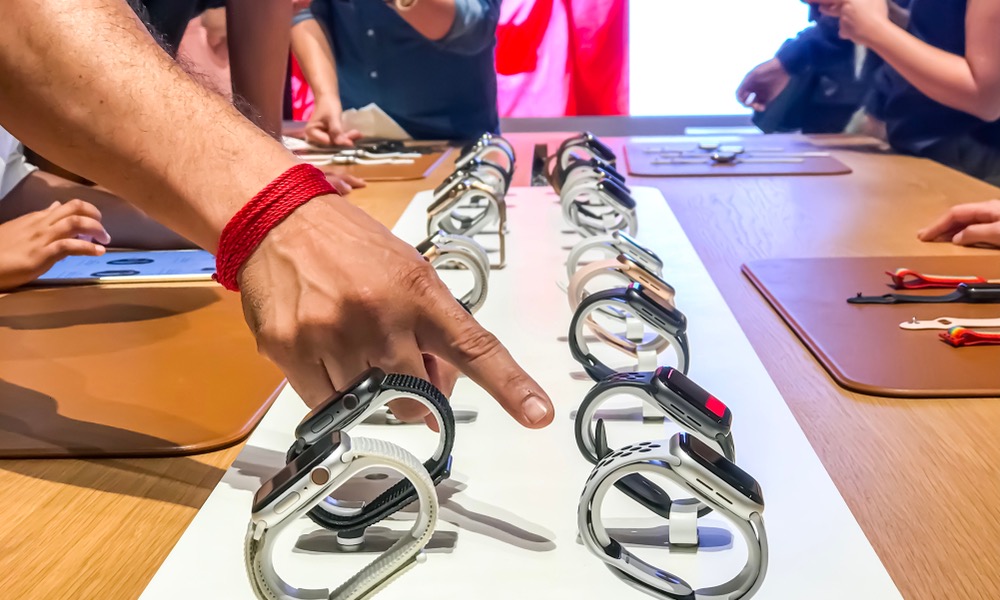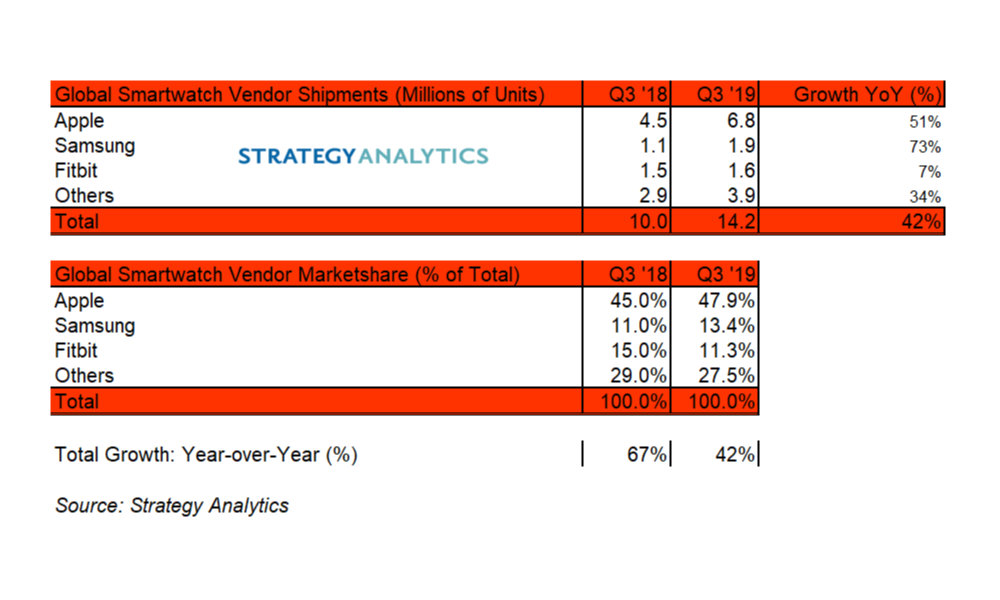As Sales Continue to Skyrocket, It’s Clear the Apple Watch Has No Rival
 Credit: Tain Teerasak / Shutterstock
Credit: Tain Teerasak / Shutterstock
Toggle Dark Mode
The Apple Watch continues to lead the wearables industry from a position well ahead of the pack, with sales continuing to grow by leaps and bounds year over year.
Apple doesn’t release specific sales figures for the Apple Watch, instead lumping it into the “Other Products” category in its earnings reports, alongside other products such as the Apple TV, the HomePod, AirPods, and even the iPod touch. However, industry analysts who are in the business of closely watching Apple can ferret out enough information to come up with pretty good estimates on sales figures, although different interpretations still leave some margin for error.
If numbers from Strategy Analytics are even close to accurate, though, Apple is so far ahead of its competition that it’s clear why many of them have been struggling to keep up.
According to the report, global smartwatch shipments in the third quarter of 2019 totalled 14 million units, of which the Apple Watch made up almost 50 percent, with an estimated 6.8 million units sold worldwide.
By comparison, second place was held by Samsung, which shipped 1.9 million smart watches, followed by Fitbit’s 1.6 million. Miscellaneous other smartwatch vendors — companies like Garmin, Huawei, and Xiaomi — collectively accounted for 3.9 million sales.
What’s especially impressive about these numbers, however, is that Apple’s sales not only increased by 51 percent from 4.5 million sales in the year-ago quarter, but that its growth seriously outpaced the rest of the industry — global smartwatch shipments overall only grew by 42 percent, and while Samsung saw an impressive leap from 1.1 million units, Fitbit only grew by a meagre 0.1 million.
Apple Watch continues to fend off strong competition from hungry rivals like Fitbit and Samsung. Apple Watch owns half the worldwide smartwatch market and remains the clear industry leader.
Strategy Analytics
The result of this is that Apple’s market share of the smartwatch business jumped from 45 percent to 48 percent, and while Samsung is firmly entrenched in the number two position — no doubt thanks to the Apple Watch not competing on the Android playing field — it shows no signs of catching up to Apple anytime soon.
Meanwhile, Fitbit, which was recently rescued by Google after struggling to survive, isn’t really in the game at all anymore; although there’s certainly the possibility that Google could still make something of it, both companies have been languishing in wearables for years, so Google’s purchase of Fitbit feels more like a “Hail Mary” play than any kind of cohesive strategy to take on Apple.
Unlike the relatively mature smartphone market, however, the market for smartwatches and similar wearables remains largely untapped, so there’s still a lot of room for growth everywhere. Plus, Apple’s competitors still enjoy a lot of room to maneuver as long as the Apple Watch remains an accessory exclusive to iPhone users; however, this could certainly change as Apple continues to decouple the Apple Watch and watchOS from the iPhone and make it more independent.







